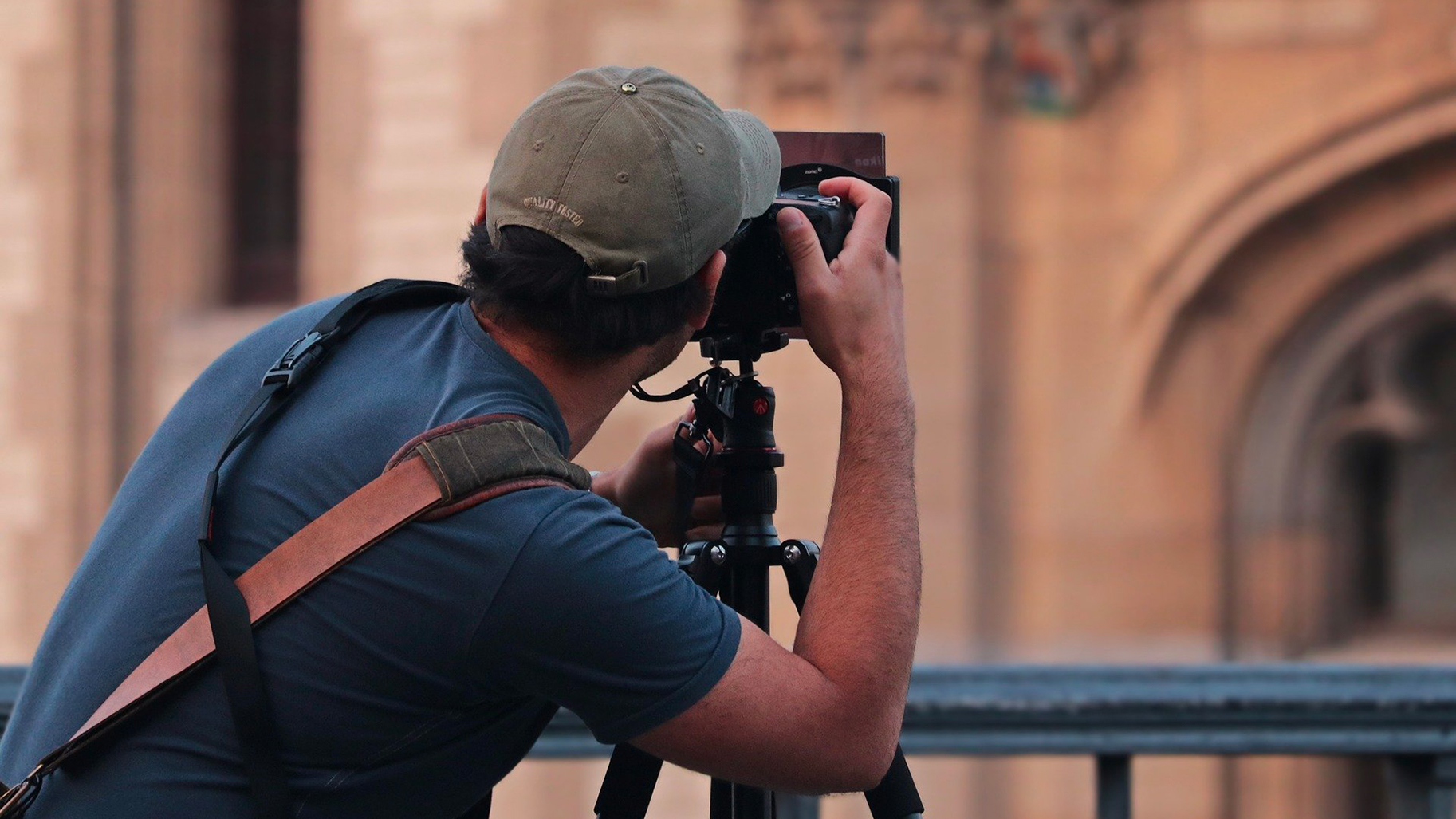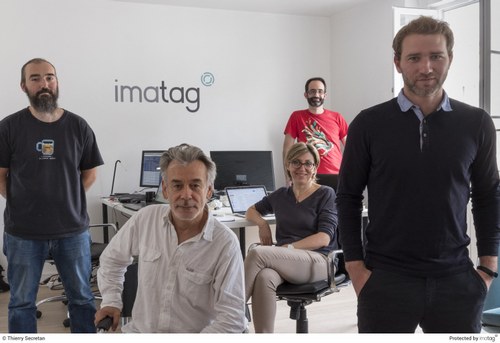
What gives Imatag an edge over any competitor is the nifty combination of two technologies born at Inria. First: a robust and imperceptible watermarking system which allows content creators to embed metadata that can be recovered despite all kind of alteration and cropping. Second: a stunningly powerful visual search tool based on similar image retrieval. This enables the company's bot to keep authors and digital rights managers posted on any use of their fingerprinted content on the web, including potential infringement on their copyrights.
“Our web crawler currently indexes 70 million pictures a day, says CEO Mathieu Desoubeaux. At this juncture, our data base already boats over 5 billion pictures found on the internet, of which 500 million feature some form of credit. And we plan to keep it growing as our technology can scale up easily.” Imatag is available as an online service for photographers with subscription plans starting from $20 a month for 1,000 fingerprinted images. “Once their pictures are marked, authors get an email alert whenever one of these tagged photo is published on the web.”
Tracking Down Leaks
Beside individual photographers, the company mostly caters to photo agencies and major corporate clients. “For instance, we are a white label partner of Wedia, a leader in Digital Asset Management whose customer portfolio includes Coca Cola and the like.” Big brands typically use the tool for spotting and tracking down leaks of embargoed photos before the official release of their new products: “The latest smartphone, the next concept car, soccer jerseys and whatnot.” Addressing a global market, Imatag recently hired a sale manager in New York in order to cover the North American market. “Talks are going on right now with several big names and we'll have good news to announce later this year.”
Good news are also coming from Strasbourg, seat of the European Parliament. On March 26, this EU institution passed a much-ballyhooed Directive on Copyrights. Its key proviso states that, from now on, online platforms must pay editors whenever they aggregate external content or use it one way or another. “This decision couldn't be more timely for us, Desoubeaux rejoices, for we have a robust solution that will enable publishers to monitor how their copyrighted content is used on the web. By the same token, our tool will also be of interest to internet platforms. The new law provides that they remunerate content creators. So they will need to keep tab on their use of all this material in order to pay publishers and authors.” Incidentally, some of those platforms may have to tackle illegal use of hosted content by third parties as well. “We have conducted a survey showing how clones of Instagram have proliferated, generating advertising revenue, monetizing people's pictures without sharing any of the profits.”
Fact-Checking
Similarly fueling the interest for Imatag are the proportions taken by the fake news turmoil. “In essence, the trust in the media is gone. Pictures can be tampered with or taken out of context by slashing both caption and metadata. Original press stories can be edited to serve all kind of purposes. So there is a growing need for fact-checking. A number of news organizations are now investing ressources in this activity. And our software happens to address this issue remarkably well. It provides robust fingerprinting but it also preserves all the metadata pertaining to a document, such as the author's credit or the original caption that provides all the context about a picture. Using Imatag, fact-checkers can instantly track down an image or a piece of news as it was originally published, and pinpoint all the manipulations it underwent subsequently.”
Strategic Alliance with EDD
In that regard, Imatag is working hand in glove with its major investor. Namely EDD, the number one newspaper content licensors in France. This group injected a total of €1,3M in two successive funding rounds. “It's a strategic alliance first and foremost. They use our technology in order to fingerprint their catalogue of press clippings converted into PDF files. In addition, we work together on building a service that will leverage their 30-year archive and enable fact-checkers to access a chronology for any content ―including text content― that pops up on the internet. We are able to pinpoint when a story was first mentioned, on which particular news outlet, so on and so forth. It's mighty powerful. It can authenticate and certify information,” thus addressing the misgivings of the era.
CEPIC in Paris
On June 4, in Paris, Imatag will sponsor a seminar during the CEPIC congress, the gathering of the world photo industry. “We will discuss these technological solutions for the European Copyright Directive and the fight against fake news with speakers from the press and television, as well as Ewa Kijak, a scientist with Inria research team Linkmedia. Having strong Inria DNA, we kept close ties with the institute. Researcher Teddy Furon is a co-founder of the company and not long ago we hired a post-doctoral student from the lab. Imatag and Linkmedia are also partners in a new research project on IA for mobile.”
